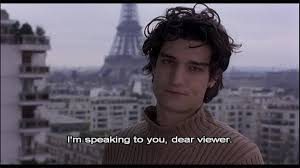
Foreign Language Film: A barrier, or a bridge?

Language is something that both creates barriers and breaks them down. All of humanity and much of the animal kingdom has some form of communication– a language. Many of us speak more than one, and within our daily lives we shift between different dialects. We use a specific language at work, at home, at a bar with our friends. Film is also a language; primarily visual, but inclusive of sound and the spoken word.
The vast number of languages in existence make a film’s language(s) much more than simply a default to the language of the origin country. Choosing a film’s language is an artistic, intentional, and business decision. It is sometimes made lightly, but still makes a huge difference to the mood, structure, audience, and budget of a film.
Another way language affects film is through audience understanding. It’s an amazing thing for a filmmaker to make a film in their native language, especially when it isn’t widely spoken. Yet, this means that for the film to succeed in the world market, it must be either dubbed into English or have English subtitles. For many languages, meaning and nuance in dialogue get lost in translation. The mise-en-scene of the film may include books on a shelf or signs on the street that cannot be translated, and are therefore lost to non-native viewers.
For example, Mother (Ema) (2016) was made in Estonian, with English subtitles. It was a mystery/whodunnit film with very little dialogue. That meant as an English-speaking audience member trying to figure out who the culprit was, one had to pay attention to every detail and nuance in facial expressions, actions, and especially language. There is no doubt that much of the double meaning and slight hints were lost in translation to the English subtitles. Does this barrier make the film any less engaging? It likely does make understanding difficult for some, but for others (like myself), it simply makes you want to learn Estonian.
The film Sparrows (2015) was made in Icelandic, and again had very little dialogue. The mood, photography, and acting in the film were all very precise and specific. Icelandic is a very complex language, and is actually one of the most difficult to learn for the English speaker. The language itself uses a lot of nuance, and on top of such a nuanced film, much was lost. In the case of this film, the lack of dialogue is a double-edged sword. On one hand, this means much is expressed through other means (cinematography, acting, music, etc.). On the other hand it makes every piece of dialogue more important, thus amplifying any nuances lost in translation.
For another example, a film such as Black (2015), which was made in Dutch and French, used language as a way to create a barrier within the cinematic world. The film used dialogue to enhance the characterization of the actors. Much of the dialect switched between French and Dutch seamlessly, sometimes used as an indication of mood shifts, and situation changes. While the non-english barrier still existed (twice over), the film used it in an additive way. In this case, the language of the film magnified the differences between the two gangs, as well as the intensity of the main characters’ connection. While this use of language does not negate the issues mentioned earlier, it does provide an instance where the language barrier is complementary to the film itself.
Ultimately, the sound and dialogue in a film are secondary to the visuals. When I find myself frustrated because I’m sure I missed a hint in the dialogue of a foreign-language mystery, it just makes me look harder at the faces, actions, and surroundings of the characters. Sometimes cultural differences can mean that gestures and expressions are also lost in translation (think: the peace sign is not always the peace sign). Does this mean all foreign-language films are lost to us? Should we just give up and stick to English? Of course not! Instead, we should use our different understandings of the films as a stepping stone for dialogue about cultural differences. Imagine a forum of people who speak different languages all discussing what they understood about the same film? It’s possible to devote all your energy to ideas like this, and who’s to say that’s not the right idea?
Comments are closed, but trackbacks and pingbacks are open.